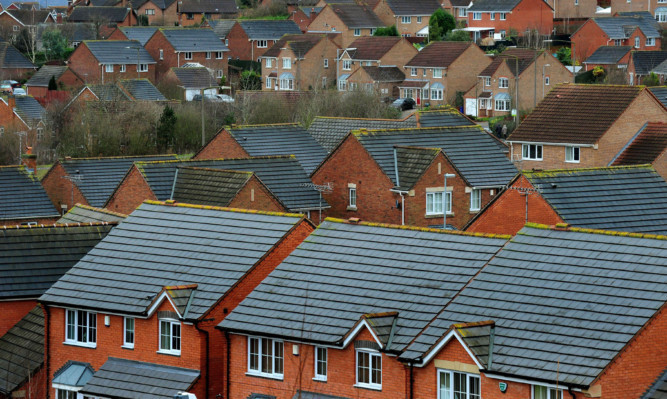House prices suffered their sharpest monthly drop in six years last month following the introduction of a new tax, a report has found.
Average prices fell 1.6% in April – equal to £3,000 – to £184,970, the largest monthly fall since March 2009 according to the Your Move/Acadata House Price Index for April.
It came after a “high-octane performance” in the Scottish housing market in March as high-end buyers rushed to complete expensive purchases under the old stamp-duty rates ahead of the introduction of the new land and buildings transaction tax (LBTT) in April.
In total, 83 properties worth £1 million or more were sold in March, compared to 12 in a typical month, with 46 of them changing hands in the three days running up to the introduction of LBTT on April 1.
No properties were sold for more than £1 million in April.
Christine Campbell, Your Move managing director in Scotland, said: “Reforming Scottish stamp duty was always going to ruffle a few feathers in the market.
“After a spectacular 9.4% leap during March ahead of the new land and buildings transaction tax (LBTT), average Scottish house prices subsequently fell 1.6% in April – equal to £3,000.
“This is the sharpest fall we’ve seen since March 2009 when the housing market was at the lowest ebb of the housing crisis.
“The Scottish housing market put on a high-octane performance in March as high-end buyers raced against the clock to snap up million-pound property before the higher rates of stamp duty came into play.”
She added: “This jet stream of high-value purchases magnified the average price paid in March but now the market is re-focusing under the lens of the new tax regime – and in contrast there were no property sales over £1 million in the month of April.”
She said that the “high-end freeze” also cooled annual growth, which slipped from 16.3% in March to 14.6% in April.
The report found that Orkney, the Western Isles and Shetland weathered the stamp-duty disruption on the mainland and saw the highest price increases during the month, of 9.1%, 4.8% and 4.4% respectively.
Property values also reached a new peak in the Scottish Borders, Highlands, and West Dunbartonshire in April.
The area with the largest fall in average prices in the month was East Lothian, down 7.2%.
There were 8,203 home sales in Scotland during April, jumping 18% on the previous month and also 4% higher than a year ago.
Overall, Scottish sales in both March and April have grown on 2014 levels – bucking the trend witnessed across England and Wales, where sales have been consistently falling behind on a yearly basis over the past six months.
The report said that the majority of Scottish buyers – those purchasing property for under £254,000 – will benefit from lower tax costs, so the momentum in the market should continue into the summer, even if prices are reined in over the short-term by a slower top-end, until they adjust to the new banding.
